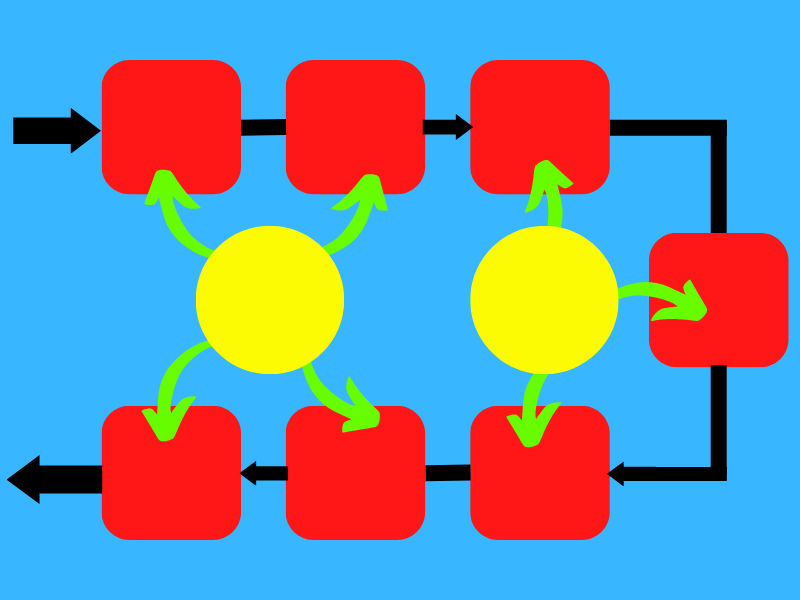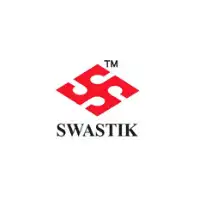Are you struggling to meet your production targets while maintaining quality standards and maximizing your resources? Perhaps you're producing in batches, which can lead to long lead times, high inventory costs, and quality issues. Fortunately, there's a better way to manufacture products: one-piece-flow. I
n this article, we'll explore what one-piece flow means, its benefits, and how it compares to batch production. We'll also discuss the key principles of one-piece flow operations and how to implement it in your organization.
One piece flow is also one of the lean tool, you will be learning this in this article.
What’s One Piece Flow?
One piece flow is a production strategy that involves creating products in a continuous flow, one piece at a time, instead of producing products in batches. The goal of one piece flow is to reduce the lead time of production, minimize waste, and improve efficiency in the production process.
One Piece Flow Definition
it can be defined as a manufacturing process that involves producing products in a continuous flow, one piece at a time. The process involves moving a single unit of product through each stage of production, from start to finish, without interruption.
One Piece Flow Operations
The implementation of one piece flow in manufacturing involves optimizing the layout of the production floor and streamlining the production process. By focusing on the production of one piece at a time, the manufacturing process can be optimized to eliminate inefficiencies, such as waiting times, overproduction, and excess inventory.
One key aspect of this operations is the use of visual management systems to ensure that workers can quickly identify production issues and take corrective action. This helps to minimize the need for inspections and improves quality control.
One Piece Flow vs Batch Production
Batch production involves creating a large batch of products at once before moving on to the next batch. This can result in a longer lead time and greater risk of waste and errors, as any defects can potentially affect an entire batch.
In contrast, this mehtod focuses on creating products one at a time, with each unit being inspected and tested before moving on to the next stage of production. This approach can reduce the risk of defects and improve overall product quality.
Advantages of One Piece Flow
Implementing this method in manufacturing offers several benefits, including:
- Reduced lead time: it reduces lead time by producing products continuously, eliminating waiting times between production stages.
- Improved quality control: With each unit being inspected and tested before moving on to the next stage, one piece flow can improve overall product quality and reduce the risk of defects.
- Increased efficiency: This technique minimizes waste and improves production efficiency by eliminating overproduction and excess inventory.
- Greater flexibility: This allows for greater flexibility in responding to changes in customer demand, as production can be adjusted in real-time to meet demand.
Batch Product Flow vs a single Piece Flow
low, products are produced in large batches, with each batch undergoing the same process before moving on to the next step. This means that a large number of products are produced simultaneously, with each batch waiting for the previous one to complete the process.
On the other hand, one-piece flow is a production method that involves the continuous production of a single unit from start to finish. In this method, each product goes through the entire production process, one at a time, without waiting for other products to complete the process.
Batch flow is often used in situations where large volumes of products need to be produced quickly and cost-effectively. However, it can also result in large amounts of inventory, longer lead times, and increased production costs due to waste and inefficiencies.

One-piece-flow, on the other hand, is often used in situations where quality, speed, and flexibility are more important than volume. This method reduces inventory, lead times, and production costs by minimizing waste, reducing defects, and increasing efficiency.
Overall, the choice between batch flow and one-piece flow depends on the specific needs and goals of the production process. While batch flow can be more efficient for certain types of products, one-piece flow offers greater flexibility and quality control.
Conditions for successfully implementing Single Piece Flow
Single Piece Flow is a production method that involves the continuous production of a single unit from start to finish, without waiting for other units to complete the process. Implementing Single Piece Flow can bring many benefits to a production process, including reduced lead times, increased efficiency, and improved quality. However, there are certain conditions that need to be met for Single Piece Flow to be successfully implemented.
- Standardization: Standardization of processes and products is critical for implementing Single Piece Flow. Every product must follow the same production process, and each process step must be standardized to ensure that every product is produced with the same quality and efficiency.
- Leveling of demand: The demand for the product must be leveled to ensure that production can be continuously maintained without any interruptions. This can be achieved by using techniques such as production smoothing, which involves spreading production across the production cycle to prevent large fluctuations in demand.
- Flexibility: The production process must be flexible enough to handle changes in demand or product variation without affecting production flow. This can be achieved by implementing flexible manufacturing systems, such as automated assembly lines or modular production cells, which can easily adapt to changing production requirements.
- Continuous improvement: Continuous improvement is essential for Single Piece Flow to be successful. The production process must be continually monitored and optimized to eliminate waste, reduce defects, and increase efficiency.
- Workforce training: The workforce must be trained in the Single Piece Flow production method to ensure that everyone understands the process and can contribute to the continuous improvement of the production process.
- Total Quality Management (TQM): The implementation of Total Quality Management (TQM) principles is also essential for Single Piece Flow to be successful. TQM involves the continuous improvement of processes and products through the involvement of all employees, leading to increased quality, efficiency, and customer satisfaction.
In summary, implementing Single Piece Flow requires a standardized production process, a leveled demand, flexibility, continuous improvement, workforce training, and the implementation of TQM principles. By meeting these conditions, a production process can reap the benefits of Single Piece Flow, resulting in reduced lead times, increased efficiency, and improved quality.
Why one-piece-flow will fail reason for one piece flow failure and how to improve it ?
While single-piece flow can be an effective approach for manufacturing processes, there are situations where it may not be suitable or may fail to achieve the desired results. Here are some reasons why one-piece flow may fail in industries and some tips to overcome them.
- Complexity of the process: Single-piece flow may not be practical for highly complex processes with many interdependent steps. In such cases, a hybrid approach that combines batch processing with single-piece flow may be more effective.
- Machine breakdowns: Single-piece flow relies on a continuous flow of workpieces through the process. Machine breakdowns or maintenance can disrupt this flow, causing delays and reducing efficiency. To overcome this, it is important to have backup machines and maintenance schedules that minimize downtime.
- Unbalanced workloads: In some cases, certain tasks in the process may take longer than others, leading to bottlenecks and delays. It is important to balance the workload and ensure that each workstation can complete its task within the allotted time.
- Variability in demand: Single-piece flow may not be suitable for industries with highly variable demand. In such cases, a flexible approach that can adapt to changes in demand may be more effective.
- Lack of standardized work: Standardized work is essential for single-piece flow to work effectively. If work instructions are not clearly defined or not followed consistently, it can lead to errors and inefficiencies.
To overcome these challenges, here are some tips:
- Use visual management tools such as kanban boards to monitor the flow of workpieces through the process and identify bottlenecks.
- Implement a Total Productive Maintenance (TPM) program to minimize machine downtime and breakdowns.
- Implement a lean manufacturing system to identify and eliminate waste in the process.
- Train and empower employees to identify and address issues in the process.
- Use data analysis tools to monitor the process and identify opportunities for improvement.
In conclusion, while it can be an effective approach for improving efficiency and reducing waste in manufacturing processes, it is important to consider the specific conditions and challenges of each industry and process. By implementing best practices and continuous improvement initiatives, it is possible to overcome these challenges and achieve the benefits of single-piece flow.
FAQs
Q: How can one piece flow improve product quality?
A: it involves producing products one at a time, with each unit being inspected and tested before moving on to the next stage of production. This can help to identify and address defects early on, resulting in higher overall product quality.
Q: How does one piece flow reduce waste?
A: it eliminates overproduction and excess inventory by producing products continuously, reducing the risk of wasted resources and materials.
Q: Can one piece flow be used in all types of manufacturing?
A: While it can be applied to many types of manufacturing, it may not be feasible or practical in all situations. The implementation of one piece flow should be carefully evaluated based on the specific needs and constraints of each manufacturing operation.
Q: How does one piece flow compare to other production strategies, such as lean manufacturing?
A: it is a key component of lean manufacturing, which is focused on reducing waste and improving efficiency in production processes. One piece flow is one of several strategies that can be used to achieve these goals, and may be more or less suitable depending on the specific needs of a given manufacturing operation.
Read More :
Our Clients



























































